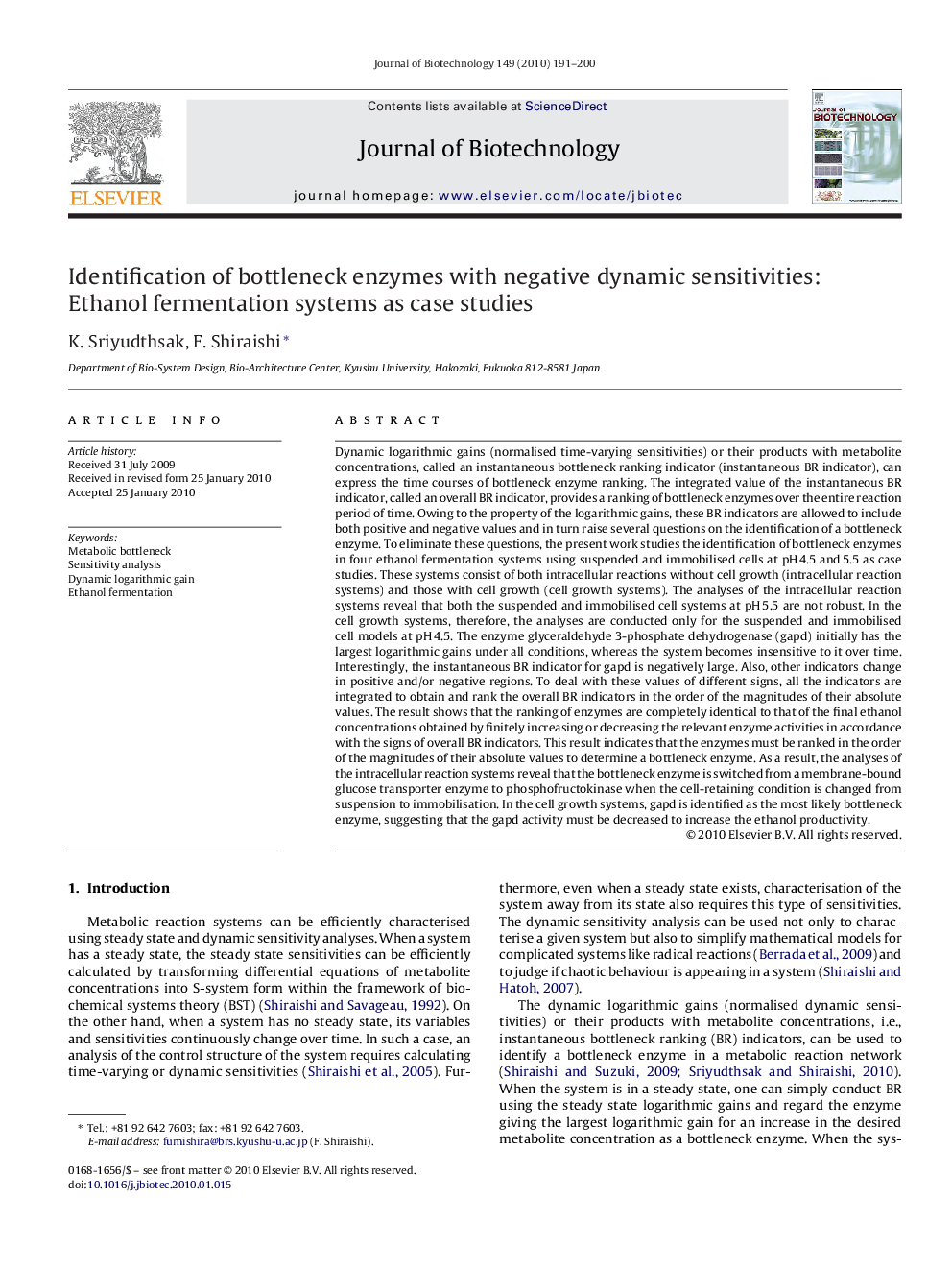| کد مقاله | کد نشریه | سال انتشار | مقاله انگلیسی | نسخه تمام متن |
|---|---|---|---|---|
| 24224 | 43505 | 2010 | 10 صفحه PDF | دانلود رایگان |

Dynamic logarithmic gains (normalised time-varying sensitivities) or their products with metabolite concentrations, called an instantaneous bottleneck ranking indicator (instantaneous BR indicator), can express the time courses of bottleneck enzyme ranking. The integrated value of the instantaneous BR indicator, called an overall BR indicator, provides a ranking of bottleneck enzymes over the entire reaction period of time. Owing to the property of the logarithmic gains, these BR indicators are allowed to include both positive and negative values and in turn raise several questions on the identification of a bottleneck enzyme. To eliminate these questions, the present work studies the identification of bottleneck enzymes in four ethanol fermentation systems using suspended and immobilised cells at pH 4.5 and 5.5 as case studies. These systems consist of both intracellular reactions without cell growth (intracellular reaction systems) and those with cell growth (cell growth systems). The analyses of the intracellular reaction systems reveal that both the suspended and immobilised cell systems at pH 5.5 are not robust. In the cell growth systems, therefore, the analyses are conducted only for the suspended and immobilised cell models at pH 4.5. The enzyme glyceraldehyde 3-phosphate dehydrogenase (gapd) initially has the largest logarithmic gains under all conditions, whereas the system becomes insensitive to it over time. Interestingly, the instantaneous BR indicator for gapd is negatively large. Also, other indicators change in positive and/or negative regions. To deal with these values of different signs, all the indicators are integrated to obtain and rank the overall BR indicators in the order of the magnitudes of their absolute values. The result shows that the ranking of enzymes are completely identical to that of the final ethanol concentrations obtained by finitely increasing or decreasing the relevant enzyme activities in accordance with the signs of overall BR indicators. This result indicates that the enzymes must be ranked in the order of the magnitudes of their absolute values to determine a bottleneck enzyme. As a result, the analyses of the intracellular reaction systems reveal that the bottleneck enzyme is switched from a membrane-bound glucose transporter enzyme to phosphofructokinase when the cell-retaining condition is changed from suspension to immobilisation. In the cell growth systems, gapd is identified as the most likely bottleneck enzyme, suggesting that the gapd activity must be decreased to increase the ethanol productivity.
Journal: Journal of Biotechnology - Volume 149, Issue 3, 1 September 2010, Pages 191–200